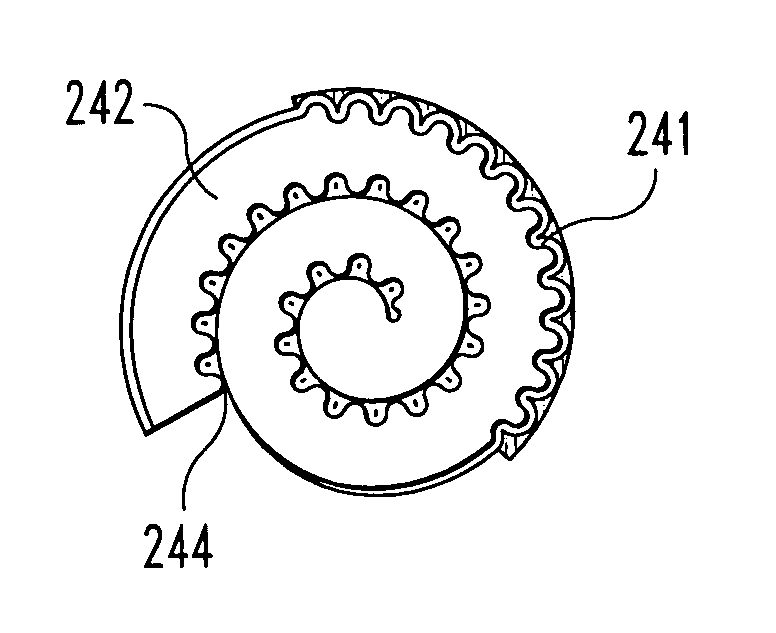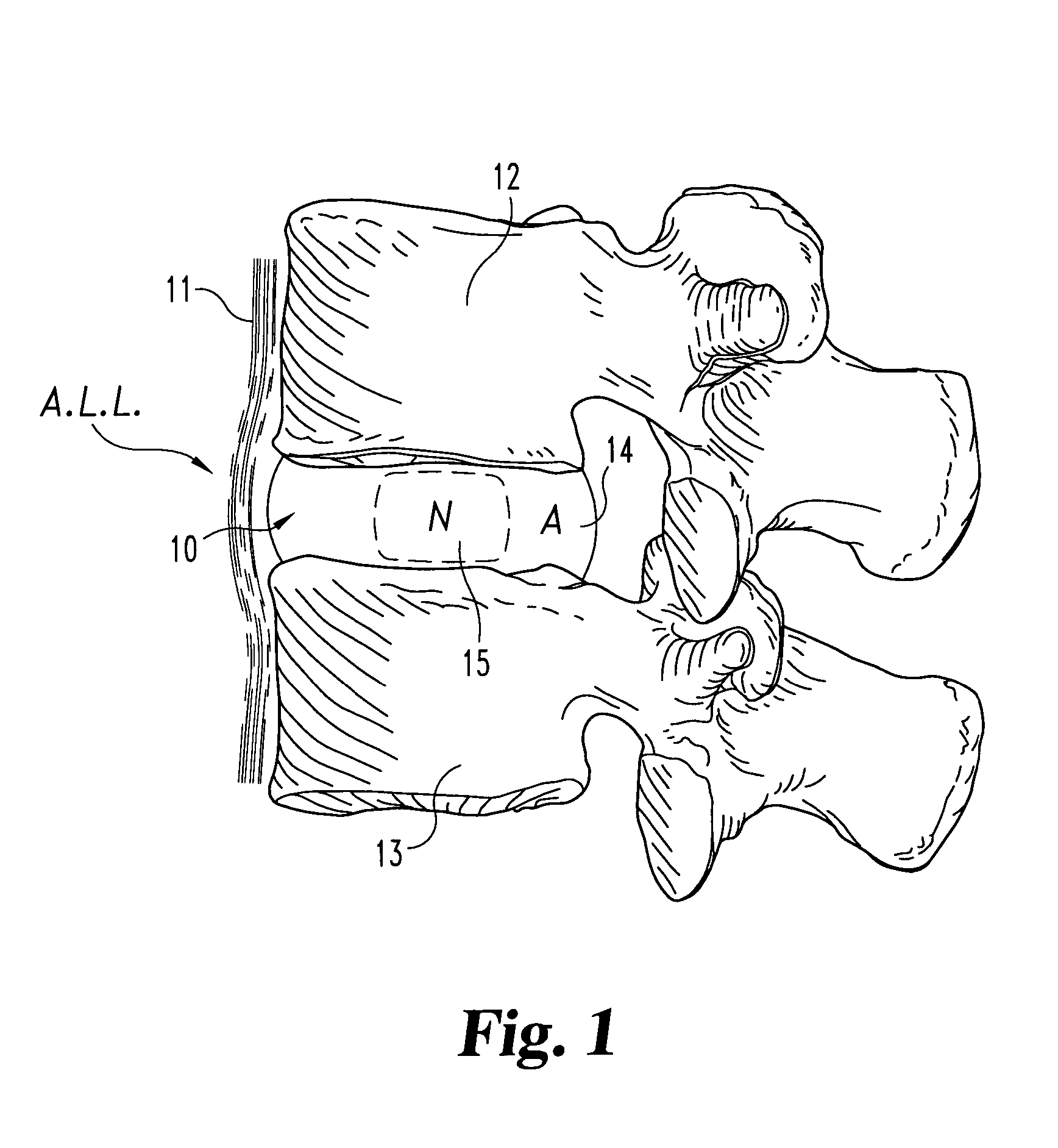Allogenic/xenogenic implants and methods for augmenting or repairing intervertebral discs
a technology of allogenic/xenogenic implants and intervertebral discs, which is applied in the field of allogenic/xenogenic implants and methods for augmenting or repairing intervertebral discs, can solve the problems of degenerated discs shrinking and possibly rupture, intervertebral discs are prone to injury and degeneration, and herniated discs, so as to facilitate the push of the implant, improve the strength and stability of the implan
- Summary
- Abstract
- Description
- Claims
- Application Information
AI Technical Summary
Benefits of technology
Problems solved by technology
Method used
Image
Examples
example
[0121] A feasibility experiment was performed to demonstrate the efficacy of disc augmentation using a dehydrated disc annulus. In the study, pig disc annulus was harvested, dehydrated into an elongated shape, cut into shorter sections, inserted into another pig disc, and allowed to reconstitute within the disc space. The augmented pig disc was then dissected for observation.
[0122] As to the details of the experiment, pig discs were sectioned from a pig spine for the study, as shown in FIG. 58. The disc was cut into two halves right at one endplate surface to preserve as much annulus as possible, as shown in FIG. 59. The anterior annulus was removed by sectioning right at the opposite endplate, as shown in FIG. 60. The annulus was rolled up in a lint-free paper for drying and shaping, as shown in FIGS. 61A-61C. The annulus specimen was placed in the desiccator for 3 days. The dehydrated annulus was removed from the paper, to provide the dehydrated disc annulus shown in FIG. 62. A p...
PUM
| Property | Measurement | Unit |
|---|---|---|
| lengths | aaaaa | aaaaa |
| lengths | aaaaa | aaaaa |
| compact structure | aaaaa | aaaaa |
Abstract
Description
Claims
Application Information
 Login to View More
Login to View More - R&D
- Intellectual Property
- Life Sciences
- Materials
- Tech Scout
- Unparalleled Data Quality
- Higher Quality Content
- 60% Fewer Hallucinations
Browse by: Latest US Patents, China's latest patents, Technical Efficacy Thesaurus, Application Domain, Technology Topic, Popular Technical Reports.
© 2025 PatSnap. All rights reserved.Legal|Privacy policy|Modern Slavery Act Transparency Statement|Sitemap|About US| Contact US: help@patsnap.com



